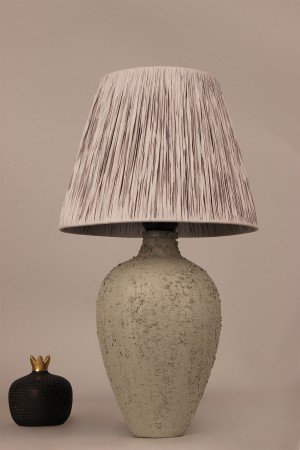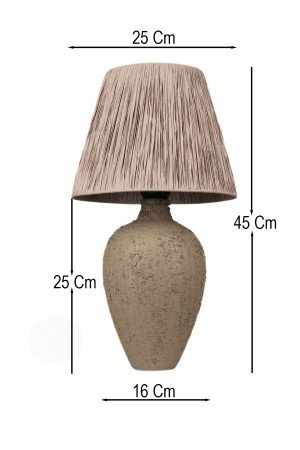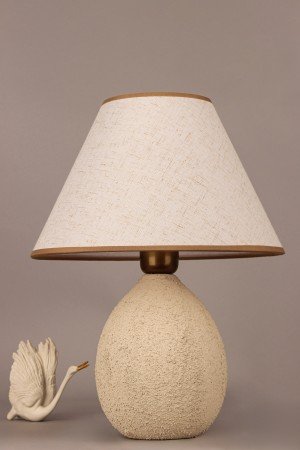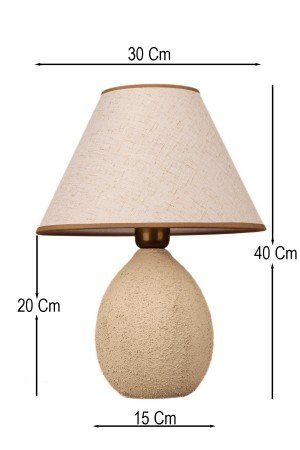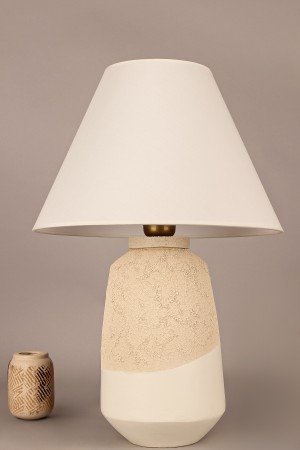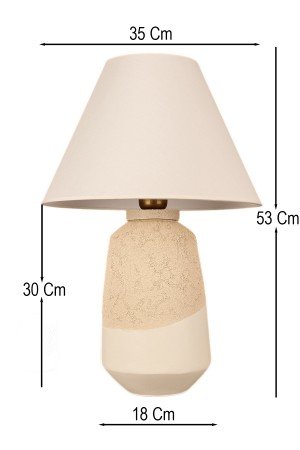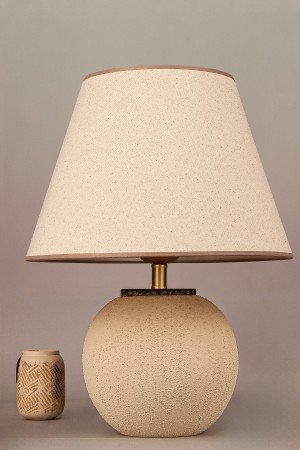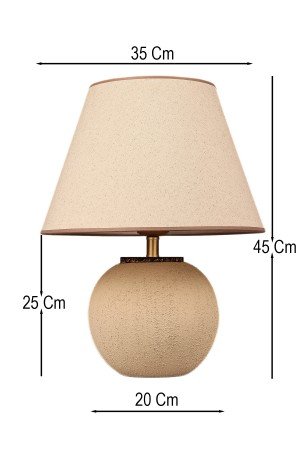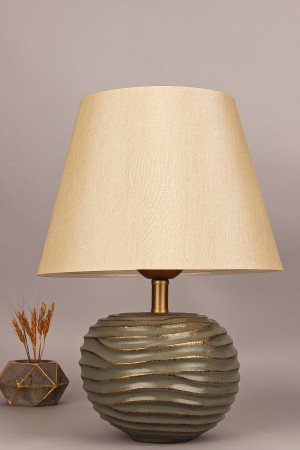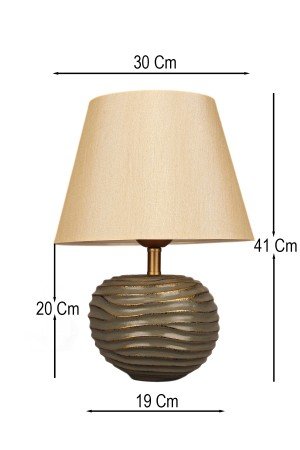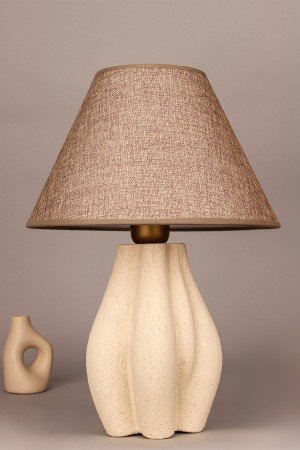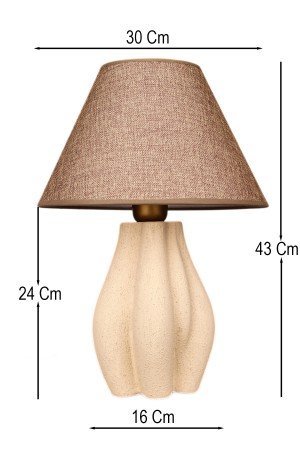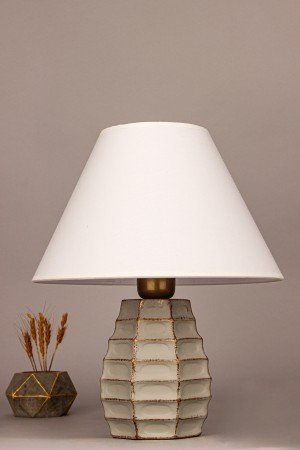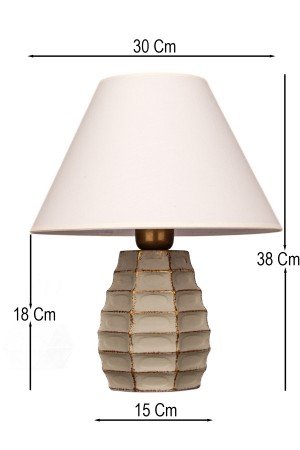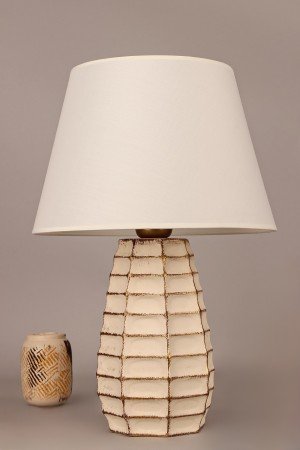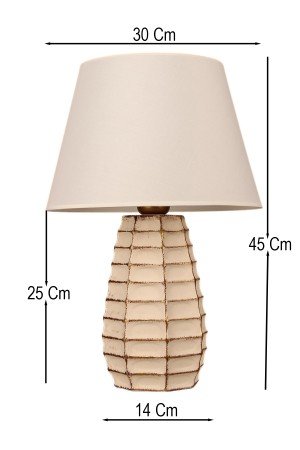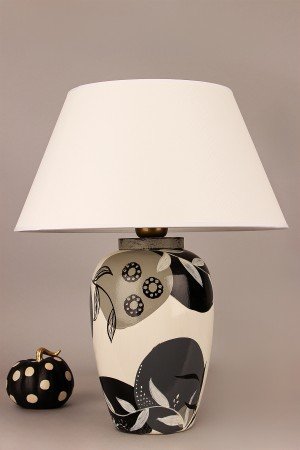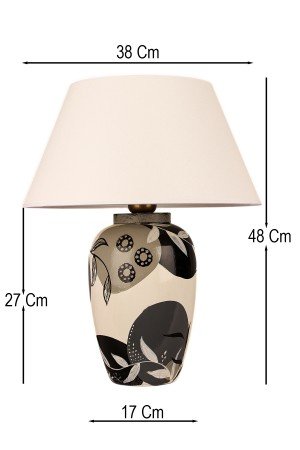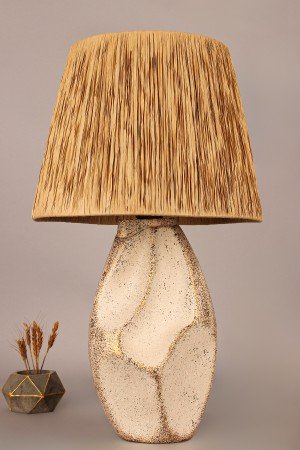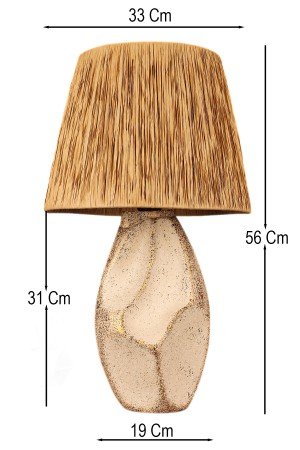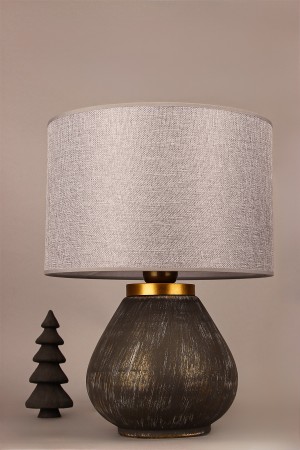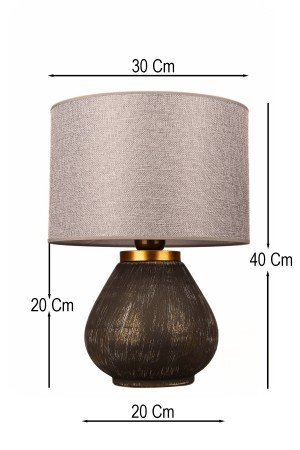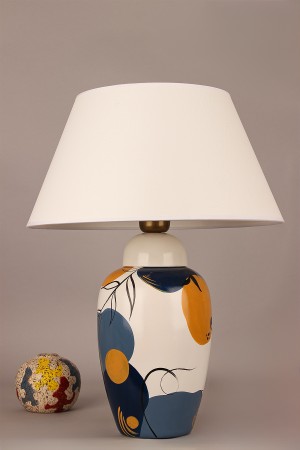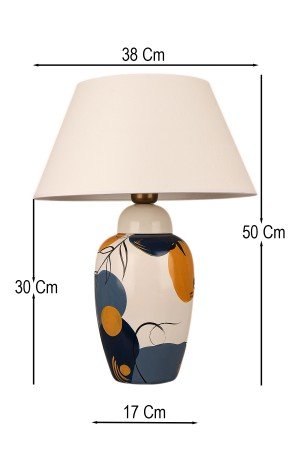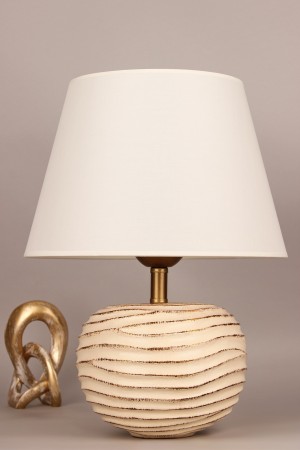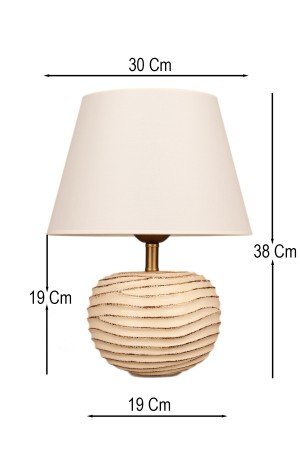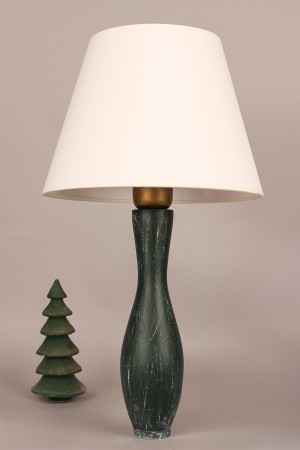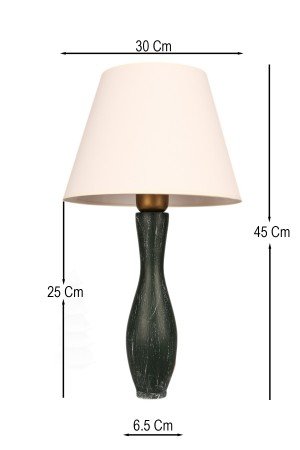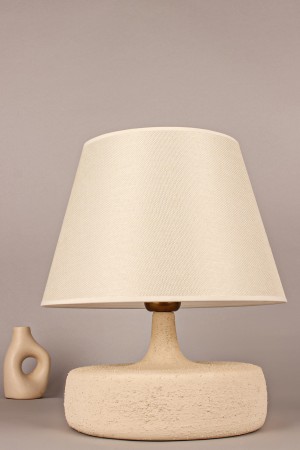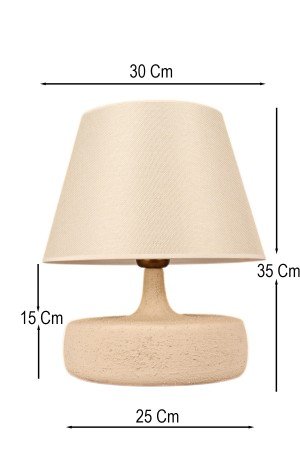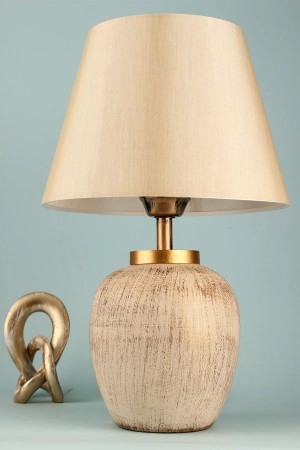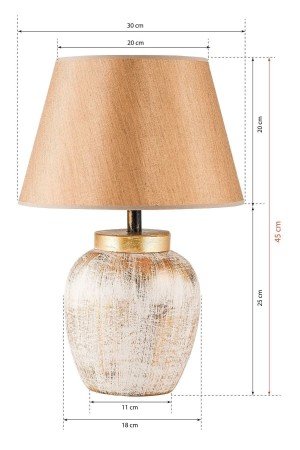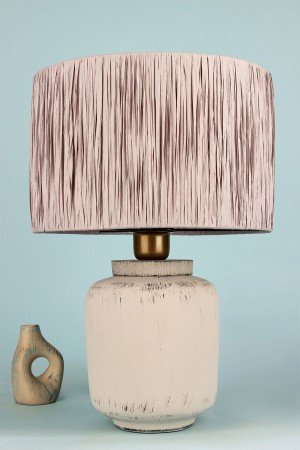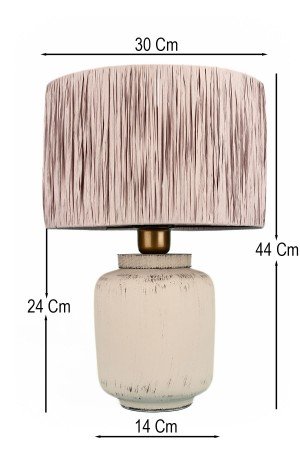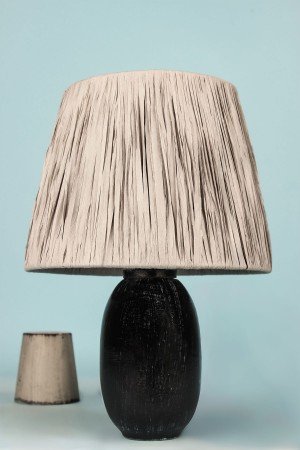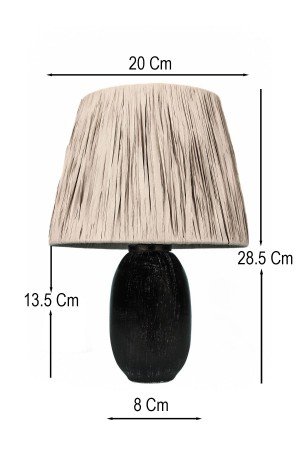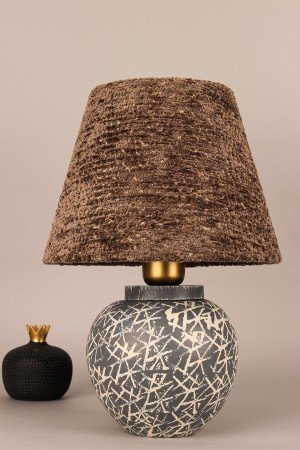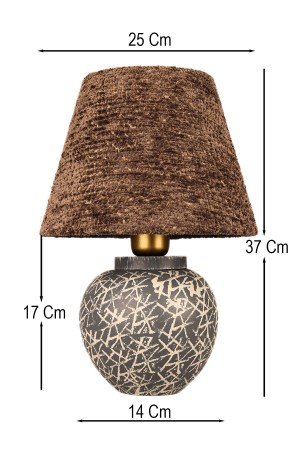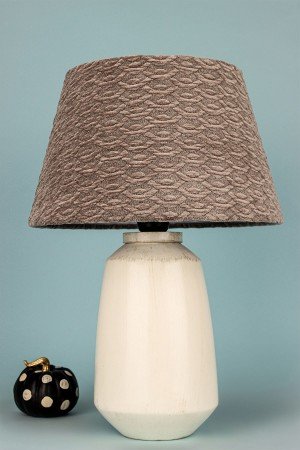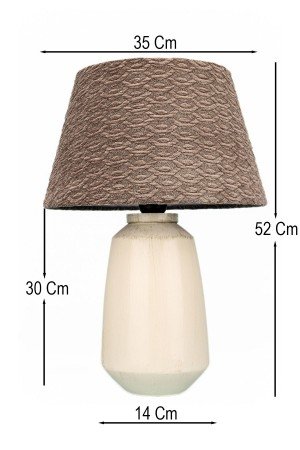Lampshade
Lampshade is an important accessory that combines aesthetics and functionality in interior lighting. Historically, it has appeared in many different forms from candlelight to electric lamps; today, it has come to the fore with its design diversity. Lampshades can become an indispensable element of decoration in a contemporary home, a classic office, or even a rustic café. In this guide, we aim to guide you by providing comprehensive information such as what a lampshade is, its types, the materials used, points to consider when choosing, maintenance and cleaning tips. We will especially touch on popular types such as wooden lampshades and ceramic lampshades under separate headings.
Lampshade Types and Features
In the world of lighting, the word lampshade generally refers to models such as table, floor (lamp) and wall type (sconce). However, lampshades are not only divided according to their forms, but also according to the material used, design line and decoration style. Whether you like modern minimal decoration or adopt a classic or rustic style, you can definitely find a lampshade that will suit your style.
1. Table Lampshades
Table lamps are the most commonly used model. They can be placed on the side table in the living room, on the nightstand in the bedroom or right next to the desk. The biggest advantage of table lamps is that they can be easily moved as needed and provide local lighting on the table. Thus, they create an environment that does not tire the eyes by emitting a warm and comfortable light.
- Advantage: Easily portable, compact sized models can be used even in narrow spaces.
- Place of use: Living rooms, bedrooms, work desks, reception areas.
- Bulb Selection: Medium or high lumen bulbs for reading purposes; lower lumen or colored bulbs can be preferred for decorative use.
2. Floor Lamps
Floor lamps or floor lamps are large-sized lampshades that stand on a vertical foot on the floor and usually have a hanging cap. They are used in large living rooms, reading corners or large office spaces. They create a strong decorative accent to the space; they are also ideal for creating a calm atmosphere next to a sofa or in a corner when dim lighting is preferred.
- Advantage: It offers both aesthetic appearance and functional use, and has a high lighting capacity.
- Style Variety: It is produced in many styles, from minimalist metal-legged to wooden designs.
- Flexibility: Models that can change the angle of the bulb allow you to direct the light in the direction you want.
3. Wall Lamps (Sconces)
Wall lamps or sconces are lampshade models that save space by being fixed to the walls in the space. They are often preferred in areas such as small or narrow corridors, stairwells, bathrooms. It is also possible to use them as bedside lighting in bedrooms. From a decorative perspective, wall sconces add texture and depth to the space.
- Advantage: It offers practical use as it does not take up space on the floor or table.
- Areas of Use: It is preferred for different purposes in hotels, homes and restaurants.
- Maintenance and Installation: Since the electrical installation is inside the wall, its installation usually requires professional support.
4. Functional Table Lamps
Functional table lamps are the name given to models that are used in offices or work desks and provide focused lighting. These lamps, which have hinged or adjustable arms, allow the light to be directed to a specific point. In this way, eye-friendly and efficient lighting is obtained in the work area.
- Advantage: Protects eye health thanks to focused lighting.
- Bulb Type: This is the product group where LED bulbs are preferred due to their energy saving and low heat production.
- Style: Produced in a wide range of styles such as modern, minimal, colorful or industrial design.
Wooden Lampshade
Wooden lampshade models are frequently preferred by those who want to bring the warmth and texture of natural materials to their interiors. Wooden lampshades, which can be easily used in rustic, country or modern decoration styles, have a versatile aesthetic. Using wooden material in its body adds naturalness and intimacy to the environment. Since the grains and color transitions of the wood differ in each product, each lampshade has its own unique character.
- Durability: A wooden lampshade that is well dried and made of sturdy material can maintain its form for many years.
- Aesthetic Touch: The polishes or aging techniques used on the wooden body can change the entire atmosphere of the product. While glossy polish gives a modern feel, aging or matte polish provides a more rustic look.
- Ease of Maintenance: A slightly damp cloth should be used when dusting or wiping, and care should be taken to prevent the wood from coming into contact with excess water.
- Variety: In addition to minimalist designs, models with carved or embossed wooden details are also available, so they can be adapted to different decoration styles.
Ceramic Lampshade
Ceramic lampshade is one of the lampshade types with high aesthetic value and a unique elegance. Ceramic material is mostly used in the body part and the product gains a very stylish and original appearance thanks to the glaze, painting techniques or embossed motifs used on the surface of this material. It can be a striking focal point even in spaces with classic, modern or even industrial design.
- Value of Handcraft: Handcraft is often used in ceramic production. This ensures that each model has its own unique character.
- Maintenance and Cleaning: Wiping ceramic surfaces with a damp cloth or mild detergent water is generally sufficient. If the surface is painted, abrasive products should be avoided.
- Richness of Color and Pattern: It has a wide scale from plain colored ceramics to hand-painted motifs, from mosaic patterns to bright metallic colors.
- Durability: When the firing temperature and glaze quality are good, ceramic material is quite resistant to impacts. However, care should be taken against very hard impacts.
Material Selection and Quality
When choosing a lampshade, the quality of the material used and its suitability for the space are extremely important. For a wooden lampshade , details such as the wood being obtained from certified forests and the proper drying process ensure the longevity of the product. For a ceramic lampshade , firing temperature, glaze quality and workmanship factors come into play. Other materials such as metal, glass or plastic also offer different advantages.
One of the most important features of a quality lampshade is the durability of the cap and body parts. While the cap ideally reflects the light emitted by the bulb, the details on the body complete the general aesthetics. There should be no looseness or imbalance in the connection of these two parts. In addition, the electrical parts used should be of high standards in terms of safety and comfort. Products with poor heat insulation and cable insulation may cause problems in the long term.
Things to Consider When Choosing
The appearance of a lampshade, as well as its location in the space and its intended use, determine the selection process. You can make a more conscious lampshade selection by paying attention to the following points:
- Light Requirement: While a higher lumen bulb is required in a reading corner, lower wattage bulbs may be sufficient in a lampshade to be used as a night light.
- Bulb Type: LED, halogen or incandescent. You should decide on your preference in terms of both energy consumption and light color.
- Size and Measurement: If it will be used on a coffee table, nightstand or on the floor, maintain proportion by choosing a model that fits the size of the space.
- Style Compatibility: Wooden lampshade can easily adapt to rustic or bohemian style, ceramic lampshade to classic or eclectic style. Metal or plexiglass body lampshades can be preferred in modern spaces.
- Positioning in the Space: Plan the cable length, socket location and a layout that will not obstruct traffic.
Maintenance and Cleaning Recommendations
Regular maintenance is important to extend the life of lampshades and preserve their original shine. Dust can particularly affect ceramic and wooden bodies with fabric caps or detailed surfaces.
- Dusting and Light Wiping: Once a month or two, you can gently dust off the body and cap of the lampshade with a soft brush or microfiber cloth. Gently wiping wood or ceramic surfaces with a slightly damp cloth is usually sufficient.
- Bulb Check: When dust accumulates on the surface of the bulb, the light efficiency decreases. Therefore, it is useful to remove the bulb, clean it and replace it with a new one if necessary. It is a logical solution to turn to LED bulbs for energy saving.
- Fabric Hat Cleaning: Fabric hats are more susceptible to staining and dust accumulation. You can remove stains with a cloth dampened with a mild detergent; for very delicate fabrics, you can choose the dry cleaning method or steam application.
- Be Careful When Using Chemicals: Avoid abrasive or strong chemicals when cleaning wooden or ceramic surfaces. These substances can damage the polish or glaze layer and affect the appearance of the product.
Energy Savings and Lighting Efficiency
While enjoying the atmosphere created by the lampshade, energy consumption should not be ignored. LED bulbs, which consume much less energy than traditional bulbs, are often preferred both for their longevity and because they do not emit heat. It is important that heat damages the surface less, especially in materials such as wooden lampshade and ceramic lampshade. Since LED bulbs produce low heat, the risk of the lampshade body deforming over time is also reduced.
In addition, the choice of color temperature (Kelvin value) should be determined according to the purpose of the space. While daylight (4000K-5000K) tones can be preferred in reading, working or dining areas, warm white (2700K-3000K) may be more suitable for resting or pre-sleep environments. In this way, the lampshade ceases to be a mere decorative element and provides a healthy lighting experience.
Use of Lampshade in Decoration
Lampshade selection in decoration can be planned as a complement or focal point. In a living room with modern lines, a metal and solid-colored lampshade can be an element that completes the minimalism in the space. In a classic or vintage style bedroom, hand-painted details on a ceramic lampshade add an elegant touch to the space. A wooden lampshade is the right choice for those who want to capture a rustic or bohemian atmosphere.
- Contrast or Harmony: If you want to create contrast in decoration, you can create a contrast to the main colors of the space with the lighting color or lampshade hat pattern. If you prefer full harmony, you can choose a lampshade color that matches the wall color and furniture tones.
- Combined Lighting: You can achieve multi-layered lighting by supporting chandeliers, spotlights and wall lamps with lampshades. In this way, it is possible to create various atmospheres in the space with different light effects.
- Proportion and Balance: A tiny lampshade on a large coffee table or a huge lampshade on a narrow nightstand can look disproportionate, so it’s important to take into account the dimensions of the space and the furniture.
Price and Budget Planning
Lampshade prices vary widely depending on the production material, workmanship quality, brand awareness and design originality. Handmade wooden lampshade or specially designed ceramic lampshade may have a higher price tag than mass-produced products. However, when considering the long-term durability, aesthetic quality and value it adds to decoration, these products become a very sensible investment.
In addition, you can find a stylish and useful lighting solution by choosing models that fit your budget. A minimalist, plain fabric-capped table lamp or affordable plastic-bodied products can be preferred, especially for student housing or temporary use. The important thing is to balance your long-term needs and the general style of the space. A durable and high-quality lampshade becomes a piece that does not wear out quickly and does not have to be replaced frequently.
Conclusion: The Importance of Lampshade in Decoration
Lampshade is one of the most enjoyable ways to personalize the lighting system in a space. Materials such as both wooden lampshade and ceramic lampshade adapt to different styles and environments, allowing you to create a natural or artistic atmosphere. Elements such as lighting quality, color temperature, bulb type and design determine the role of the lampshade in the space. Do you want to create a warm and cozy corner or a larger and clearly illuminated work area? By clarifying your needs, you can make the right decisions in terms of material, size and energy efficiency.
Especially in recent times, interest in natural materials and handcraft has been increasing. The warm texture of wood and the unique craftsmanship of ceramic products can find a place for themselves in any kind of space, classical or modern. The investment you will make in lampshades in decoration will return to you not only in terms of visuality but also in terms of your quality of life. Choosing the right lampshades is of great importance for spending long evenings in your reading corner, having productive meetings at your desk or relaxing with a dim light in your bedroom.
In short, choosing a lampshade is a perfect opportunity to capture and personalize the spirit of a space. A conscious choice that takes style, material and functionality into account will take your decoration to the next level and welcome you and your guests in a warm atmosphere.


